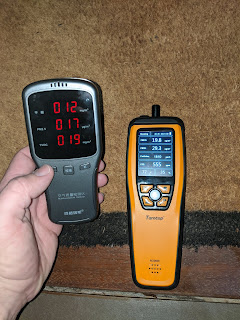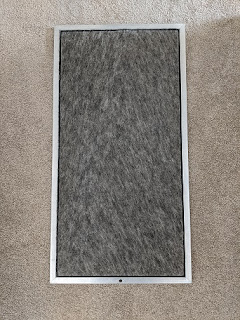Testing by CSIRO found that a typical ACH of the tested houses was 0.77 ACH, or 15.4 ACH50. The Passive House standard requires air tightness so that there will be less than 0.6 ACH50 with a pressure difference between inside and outside of 50 Pa. Under normal conditions this should mean a ACH of 0.03. 0.5 ACH50 - 0.03 ACH - Passive House, very tight 3 ACH50 - 0.15 ACH - A good aim - Just Right and Airtight 15.4 ACH50 - 0.77 ACH - Average in CSIRO study Note I am using a conversion of 1 ACH50 = 20 ACH based on a statement by CSIRO. How to measure ACH Blower door test References Air changes per hour - Wikipedia How Much Air Leakage in Your Home Is Too Much?


